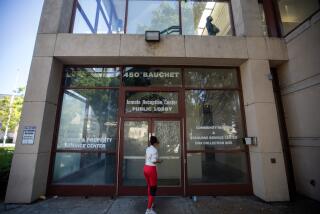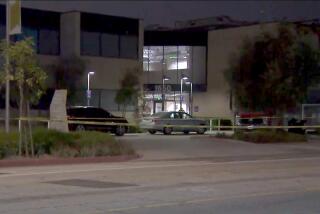200 Nuns, Students at Mt. St. Mary’s Flee Fumes
Five nuns from Mt. St. Mary’s College spent four hours undergoing emergency oxygen treatment in a compression chamber for carbon monoxide poisoning Wednesday, after fumes from a leaking gas heater forced the evacuation of more than 200 nuns and students from dormitories on the West Los Angeles campus.
The five nuns and 18 students were taken to four hospitals in the area, after the carbon monoxide spread through Brady Hall, where the nuns were sleeping, and Carondelet Hall, a women students’ dormitory, said Capt. Tony DiDomenico, a Los Angeles Fire Department spokesman.
A few hours later, all 18 students were released from the hospitals--UCLA Medical Center, Brotman Memorial Hospital, St. John’s Hospital and Santa Monica Medical Center--and returned to the campus, college officials said.
The nuns, who live above the boiler room containing the heater, awoke about 1 a.m. feeling nauseous and sounded an alarm, enabling the students to escape, college officials said.
Two of the nuns were carried unconscious out of Brady Hall and received oxygen therapy from paramedics as they were taken by ambulance to UCLA, DiDomenico said. All five nuns were later transferred to the Western Center for Hyperbaric Medicine at Northridge Hospital.
At mid-morning, Sisters Mary Flynn, Eloise Mescall, Annette Bower, Nancy Bowden and Carol Purzycki of the Sisters of Carondelet Order began intensive treatment in a hyperbaric chamber, hospital officials said.
Four hours later, they left the chamber to undergo a battery of psychometric tests to determine if they had suffered neurological damage, hospital spokeswoman Ann Bethel said.
Four of the nuns were released after testing, but Mescall was admitted to the hospital for further treatment and observation. She was later reported in good condition.
Bethel said the hyperbaric chamber resembles a railroad tanker car large enough to allow patients to get up and move around. The five nuns, she said, were accompanied in the chamber by two doctors who are specialists in the treatment.
The nuns wore special plastic hoods, through which they were fed pure oxygen to cleanse the carbon monoxide from their bloodstreams and body tissues, Bethel said.
In carbon monoxide poisoning, carbon monoxide molecules attach themselves to red blood cells, which normally carry oxygen to the body’s tissues, Bethel explained, thus starving the tissues of oxygen.
In the hyperbaric chamber, the patient is supplied with pure oxygen to make up for the deficiency, Bethel said. In the psychometric tests, their vision, memories and abilities to judge distance were tested.
“Some problems associated with carbon monoxide poisoning are very obvious, such as nausea and severe headaches,” the spokeswoman said. “But there are other problems that can occur that are very subtle, and only these tests will reveal them.
“We want to check very thoroughly that they have not suffered any neurological damage,” Bethel said.
DiDomenico said the problem was caused by a burned-out motor in a heater circulation system, which allowed natural gas to burn freely, circulating carbon monoxide throughout both dormitories.
Firefighters shut off the heating system and cleared the building of the odorless fumes by opening windows and blowing the vapors out with fans.
Kathy Janeski, the college’s assistant director of development, said the students were able to go back to their rooms just before dawn and that the college had resumed its normal operations.
More to Read
Sign up for Essential California
The most important California stories and recommendations in your inbox every morning.
You may occasionally receive promotional content from the Los Angeles Times.









